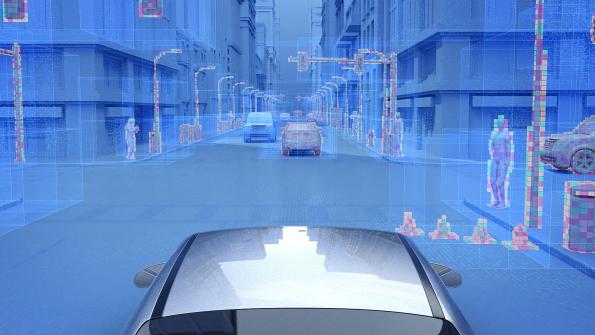Siemens Says New Tool Can Speed Autonomous-Vehicle DevelopmentSiemens Says New Tool Can Speed Autonomous-Vehicle Development
The combination of Mentor’s onboard computing technology with TASS’s simulation software removes a lengthy step from the autonomous-vehicle development process, potentially allowing that technology to reach the market much faster, executives say.

A new solution that combines simulation tools and onboard sensor-fusion technology could cut a significant amount of development time for autonomous vehicles and other advanced driver-assistance systems, Siemens says.
The new platform marries products from two Siemens companies, Mentor Graphics, which chips in its DRS360 onboard computing platform, and TASS, provider of development and testing simulation software.
The DRS360 is an embedded hardware platform that can serve as the domain controller for Level 3-5 automated-driving technology. The centralized processor takes in raw data from various onboard vehicle sensors, fuses the data and then feeds it into the decision-making software algorithms that control the vehicle’s automated-driving functions.
Because the system only processes the data relevant for each application, it can act faster and operate more efficiently, drawing on only about 100 watts of the vehicle’s electrical power. The more experimental autonomous vehicles typical of today have power loads measured in thousands of watts.
TASS’s PreScan simulation tool has been around for more than 10 years and is used by OEMs and suppliers around the world to verify the accuracy of sensors and to develop control algorithms around the numerous real-world situations an autonomous vehicle is likely to face.
PreScan looks like a computer game but is much more sophisticated, presenting a simulation not only of what cameras onboard a vehicle see but also visual representations of the reflective properties of radar and lidar, for example.
With the software, developers can run an infinite number of real-world scenarios to test the performance of their technology, and by running the software simultaneously on several computers they can simulate millions of miles of road testing overnight.
Amin Kashi, ADAS/AD director for Mentor, points to the advantages of using the simulation software to test how an autonomous vehicle would react to a pedestrian stepping in front of a vehicle unexpectedly, a scenario that is not easily replicated in the real world. It also is a situation that played out tragically in Uber’s autonomous-vehicle testing in Arizona earlier this month.
“In the simulation world, you can not only create that critical scenario, you can (run) hundreds of (variations of it under different) speed and environmental conditions,” he says.
Typically, both simulation and actual road testing is performed using several powerful personal computers, not the type of compact, automotive-grade hardware that eventually will end up onboard an autonomous vehicle. That means another layer of development is required to convert the control algorithms developed for PCs to use in an embedded application.
But in tying together the two Siemens products, developers now will be able to use the TASS simulation software to create algorithms directly on the DRS360 domain controller, eliminating that in-between step in code-writing needed to get AVs out of the lab and onto the road.
“This solution allows the developers to have access to an infinite number of scenarios, which simulate physics-based sensor data,” Kashi says. “Feeding that information into an (embedded) automated-driving platform and doing that development and validation in an embedded environment brings a lot of value to how fast you can get it into the market.”
It is possible to employ the new development tool but not use the DRS360 in production, Kashi says, but that likely would require additional validation work. Several suppliers are working on sensor-fusion-based domain controllers, so the ability to offer this combination of testing and production technology could give Siemens an important advantage over its competitors.
Currently, two unnamed automakers are said to have plans to utilize the DRS360 in production vehicles, with programs targeted for 2020 and 2021.
[email protected] @DavidZoia
About the Author
You May Also Like